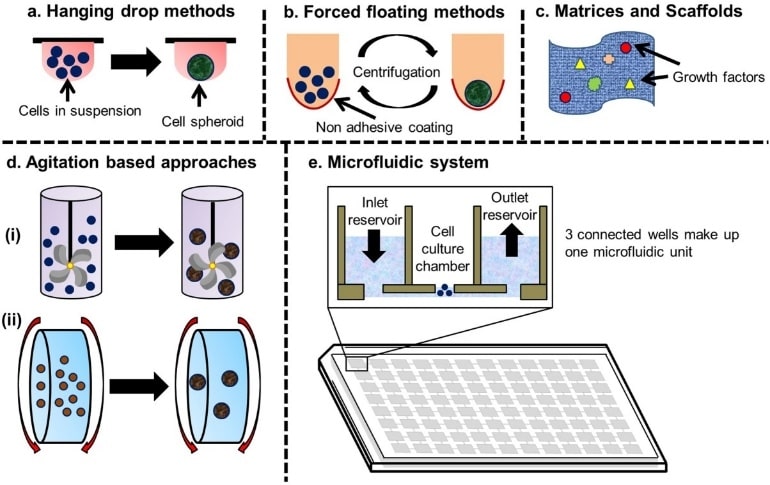Exosomes and Three-dimension Culture
It has been found that three-dimensional (3D) culture can increase the secretion of cells. Interestingly, compared with traditional two-dimensional (2D) cultured cellular exosomes (2D-Exos), the contents of 3D cultured cellular exosomes (3D-Exos) are different expression quantities of protein and miRNA. The effects of 2D-Exos and 3D-Exos on target cells also showed differences. This suggests that 3D-Exos is important in biomedical research. Creative Biolabs can provide high-quality 3D-Exos extraction services to help customers achieve more realistic results.
Advantages of Three-dimensional (3D) Cell Culture
At present, animal models usually are failing and costly. To reduce costs and obtain more predictive in vivo outcomes, 3D cell culture has been widely used. 3D cell culture enables cells to migrate and grow in the 3D spatial structure of the carrier to form a 3D cell complex. 3D culture technology can not only retain the material and structural basis of the cell microenvironment in vivo, but also make cell culture intuitive and conditional controllable. Most importantly, 3D cell culture can accurately build target tissue models and effectively predict disease course and drug response. 3D cell culture is now automated. The combination of microfluidic devices and 3D cell culture can synchronously add nutrients and filter metabolic wastes. Microfluidic devices can also simulate the fluid shear forces that cells experience in vivo, as well as automatically apply drugs or other small molecules. In addition to the high cost of animal experiments, studying exosomes in animal models often introduces more uncontrollable variables that may affect experimental results. Therefore, the efficacy determination of natural exosomes or engineered exosomes can be achieved by the 3D culture of target cells.
 Fig.1 Conventional methods for 3D cell culture.1,2
Fig.1 Conventional methods for 3D cell culture.1,2
Exosome Isolation by 3D Cell Culture
The function of exosomes is influenced by the local microenvironment in which their donor cells reside. Therefore, based on the superiority of 3D cell culture, exosomes obtained by 3D cell culture may be a more suitable choice. At present, the research on the isolation of exosomes using 3D cell culture is mainly in tumor and stem cells. Concentration measurements of 2D-Exos and 3D-Exos in gastric cancer cells have shown that the concentration of 3D-Exo is higher. In addition, the transcriptomics and proteomics of 2D-Exos and 3D-Exos derived from gastric cancer cells have shown that most miRNAs are up-regulated and proteins are down-regulated within 3D-Exo. This suggests that gastric cancer cells can dynamically regulate the release of exosomes in response to the microenvironment. In the traumatic brain injury (TBI) rat model, it has been found that the recovery of rats is different after injection of 2D-Exos or 3D-Exos derived from human bone marrow derived mesenchymal stem cells (hBMSCs). Compared with 2D-Exos, injection of 3D-Exos significantly increased angiogenesis, the number of new endothelial cells, and the number of new neurons, as well as significantly reduced neuroinflammation. These data suggest that 3D-Exos is a novel cell-free therapy for TBI. In addition, 3D-Exos derived from human periodontal ligament stem cells have been found to significantly promote the osteogenic gene expression of hBMSCs through the YAP pathway, thereby promoting new bone formation in alveolar bone defect rats.
Creative Biolabs can provide extraction services of 3D cell culture-derived exosomes and functional verification of exosomes in the 3D culture of target cells. Customers are welcome to contact us for exosome research needs related to 3D cell culture.
References
-
Gupta, N.; et al. Microfluidics-based 3D cell culture models: Utility in novel drug discovery and delivery research. Bioengineering Translational Medicine. 2016, 1(1):63-81.
-
under Open Access license CC BY 4.0, without modification.
For Research Use Only. Cannot be used by patients.
Related Services:

 Fig.1 Conventional methods for 3D cell culture.1,2
Fig.1 Conventional methods for 3D cell culture.1,2









